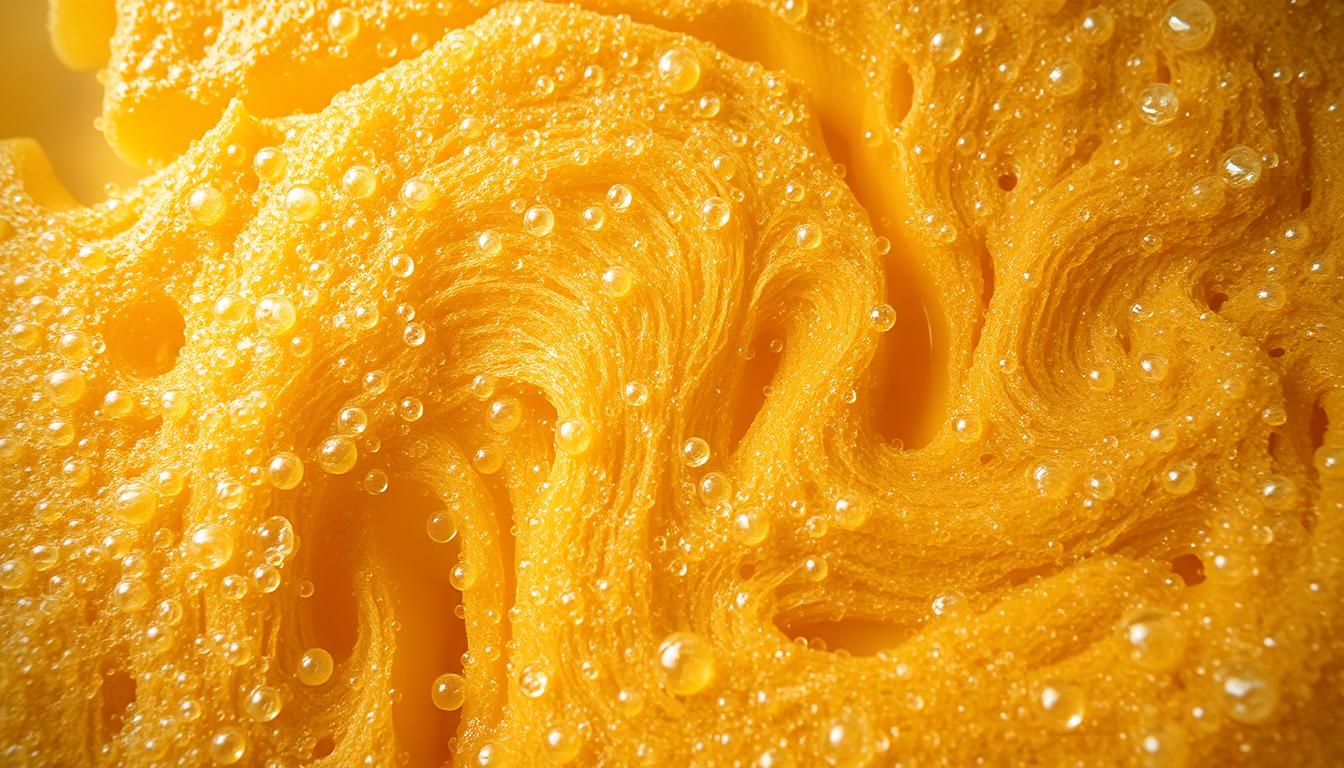One teaspoon of active dry yeast contains over 150 billion microorganisms working tirelessly to transform dough. These tiny fungi consume sugars and release enough carbon dioxide to lift entire loaves—a process so powerful it’s shaped human diets for millennia.
At its core, this biological magic relies on fermentation. When hydrated, these single-celled organisms feast on carbohydrates, producing gas bubbles that stretch gluten strands. The trapped air pockets expand during baking, creating the light, airy texture we love.
Mastering this science unlocks baking consistency. By controlling temperature and timing, you influence how vigorously microorganisms operate. Too little activity leaves dough dense; too much causes collapse. Precision turns ingredients into art.
Key Takeaways
- Microscopic fungi convert sugars into gas through fermentation
- Gluten networks trap carbon dioxide to create dough expansion
- Optimal temperatures range between 75°F–95°F for ideal activity
- Overproofing breaks gluten structure, causing baked goods to deflate
- Ancient techniques still guide modern commercial baking methods
Understanding the Role of Yeast in Bread Making
Every loaf begins with microscopic powerhouses converting sugars into flavor and structure. These living organisms shape textures through precise biochemical reactions, balancing gas production with dough elasticity.
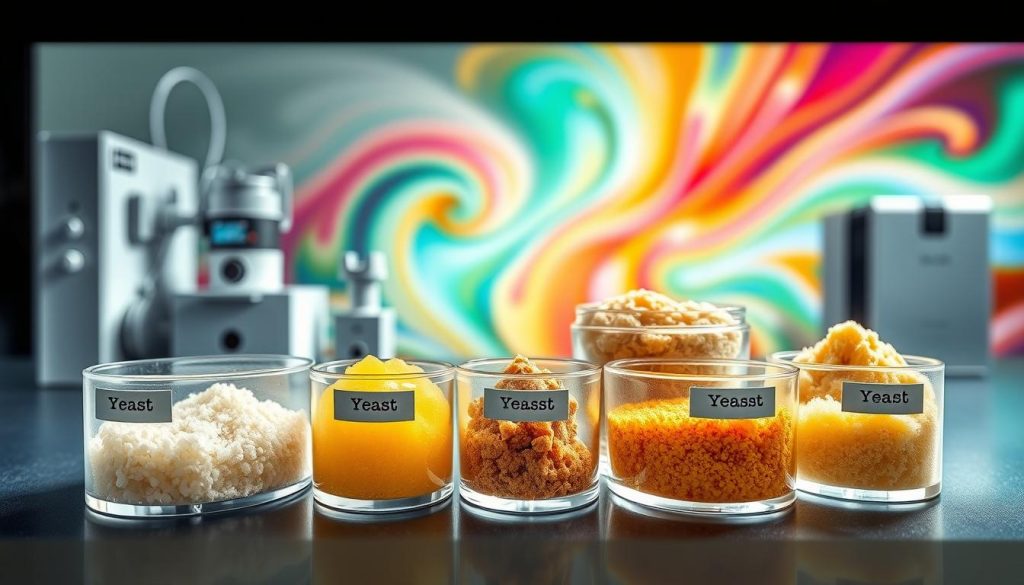
What Is Yeast and How Does It Work?
Yeast (Saccharomyces cerevisiae) is a single-celled fungus that thrives on carbohydrates. Active dry yeast requires blooming in warm water (104–109°F) to dissolve its protective layer of dead cells. Instant yeast, with finer granules, skips this step and activates faster during mixing.
| Type | Form | Activation |
|---|---|---|
| Active Dry | Granulated | Requires blooming |
| Instant | Fine granules | Direct mixing |
| Fresh | Soft cake | Dissolves quickly |
How Carbon Dioxide Creates Lift
Yeast cells first consume oxygen to produce water and CO₂. Once oxygen depletes, they switch to fermentation, creating ethanol and more gas. This dual-phase process inflates air pockets trapped in gluten networks.
Temperature controls the pace: warmer environments accelerate gas output, while cooler settings slow it. Proper timing ensures bubbles expand without rupturing the dough’s structure.
Why Bread Rises: Yeast at Work
The magic of fluffy loaves starts when microorganisms feast. As they digest sugars in your mixture, they release carbon dioxide gas—nature’s leavening agent. This gas gets caught in stretchy protein chains, creating pockets that lift your mixture upward.
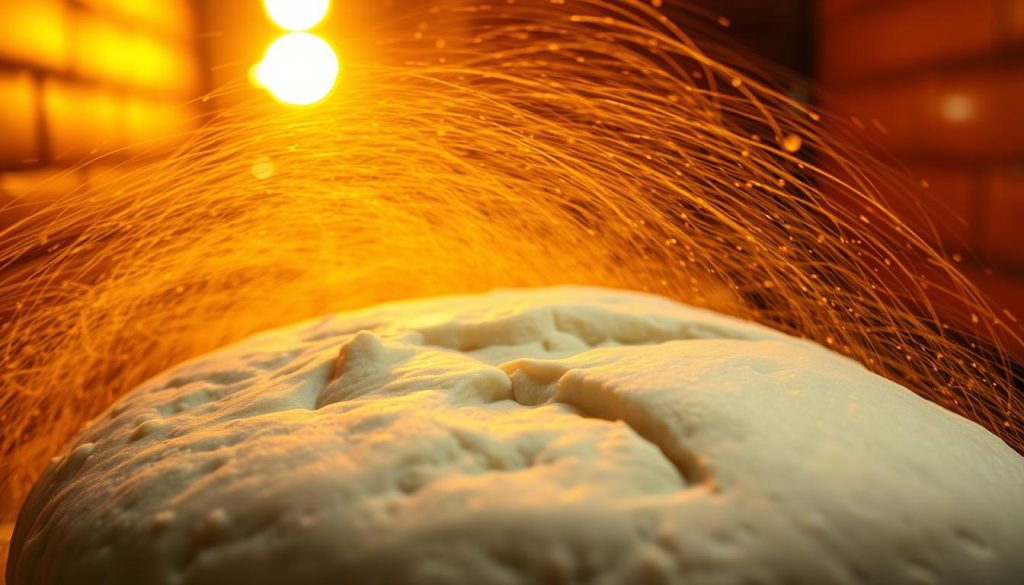
Gluten acts like elastic nets holding these bubbles. During kneading, these proteins align into sheets that expand like balloons. Without this network, gases would escape, leaving your creation flat.
Fermentation happens in two phases. First, oxygen helps fungi multiply quickly. Once air runs out, they switch to anaerobic mode, producing alcohol alongside gas. This dual action explains why timing matters for texture and taste.
| Factor | Effect on Rising | Optimal Range |
|---|---|---|
| Temperature | Warmer = faster gas production | 75°F–95°F |
| Sugar Content | More food = longer activity | 5–10% of flour weight |
| Humidity | Prevents skin formation | 70–75% relative |
Your kitchen environment directly shapes results. Cool spaces slow growth, giving flavors time to develop. Too much heat kills fungi, stopping expansion entirely. Balance transforms sticky masses into airy masterpieces.
Exploring Different Types of Yeast for Baking
Your local grocery store shelves reveal more options than ever for leavening agents. From classic granules to specialty varieties, each type brings unique strengths to bread recipes. Let’s break down how to choose the right match for your dough.
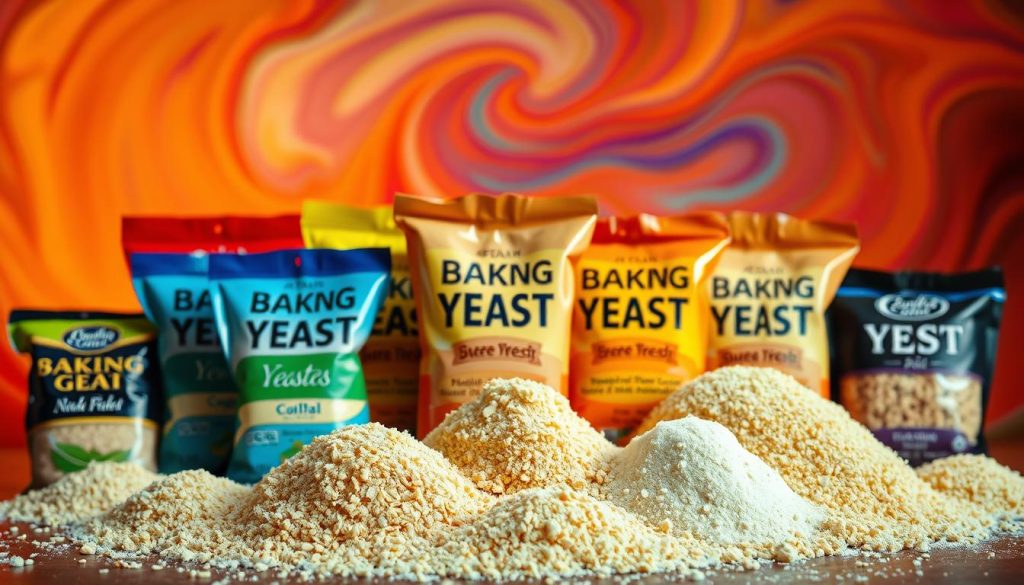
Instant Yeast vs Active Dry Yeast
Active dry yeast dominates home baking due to its reliability. Its larger granules require proofing in warm water (105–110°F) to dissolve protective coatings. Once activated, it steadily releases gas over hours.
Instant yeast skips this step. Finer particles blend directly into flour, accelerating fermentation. Tests show it generates 25% more carbon dioxide than dry yeast, ideal for quick-rise bread.
| Type | Form | Activation | Best For |
|---|---|---|---|
| Active Dry | Granules | Proofing required | Traditional recipes |
| Instant | Fine powder | Mix directly | Fast-paced baking |
| Fresh | Moist cake | Crumbles into dough | Artisan loaves |
Specialized options like RapidRise® streamline processes with single-rise efficiency. Fresh yeast offers rich flavor but demands refrigeration and quick use. Brewer’s yeast adds bitterness, while nutritional varieties lack rising power entirely.
Match your selection to recipe needs. Check labels for “instant” or “active dry” indicators. Most supermarkets stock multiple types, letting you experiment with texture and timing differences.
The Science of Gluten Development in Bread Dough
The foundation of every loaf lies in an invisible protein network. When water meets wheat flour, two proteins—glutenin and gliadin—unfold and bond. This creates stretchy strands that trap gas bubbles from fermentation.
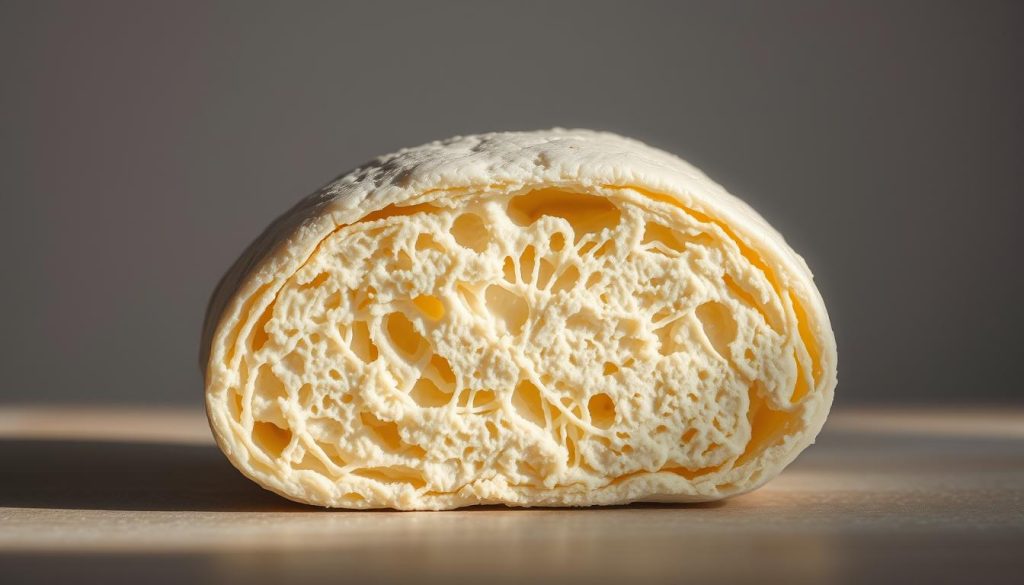
Gluten Formation Explained
Mixing triggers the magic. As you knead, proteins organize into sheets that expand like balloon walls. These networks strengthen through three stages:
- Hydration: Water awakens dormant proteins
- Alignment: Mechanical action arranges strands
- Cross-linking: Bonds create elastic structure
Proper development gives dough its signature chew. Underdeveloped gluten tears easily, while overworked strands become tough. The sweet spot comes when your mixture passes the windowpane test—stretching thin without breaking.
The Impact of Flour on Gluten Quality
Not all flours build equal networks. Bread flour’s high protein content (12-14%) creates robust frameworks for crusty artisanal loaves. Cake flour (6-8% protein) yields tender crumbs perfect for delicate pastries.
| Flour Type | Protein Content | Best Use |
|---|---|---|
| Bread | 12-14% | Chewy crusts |
| All-Purpose | 10-12% | Everyday baking |
| Cake | 6-8% | Soft textures |
| Whole Wheat | 13-14% | Dense loaves |
Your choice determines gas retention capacity. Stronger flours hold more CO₂, creating open crumb structures. Blending types lets you balance rise and texture.
Enzymes and Fermentation: Breaking Down Carbohydrates
Flour holds hidden helpers that transform dense mixtures into airy loaves. Natural enzymes act as microscopic chefs, breaking down complex carbohydrates into sugars that fuel fermentation. Without these biological tools, your dough would lack the gas production needed for proper rise.
The Role of Amylase and Other Enzymes
Amylase leads this biochemical orchestra. It slices starch molecules (amylose and amylopectin) into simple sugars like maltose. Damaged starch granules from milling create entry points for water and enzymes to start this process.
Three other enzymes refine dough properties:
- Pentosanase: Adjusts water absorption by breaking down fiber-like pentosans
- Protease: Softens gluten networks for better stretch
- Lipoxidase: Brightens crumb color by modifying fats
These reactions accelerate during mixing and proofing. As sugar levels increase, yeast consumes them to produce carbon dioxide and alcohol. The right flour blend ensures continuous enzyme activity—too much heat deactivates them, while cold slows their work.
| Enzyme | Primary Action | Optimal Temp |
|---|---|---|
| Amylase | Starch → Sugars | 68°F–104°F |
| Protease | Gluten softening | 86°F–122°F |
| Lipoxidase | Color development | Room temp |
Balance is key. Modern flour often contains added enzymes to standardize results. By understanding these interactions, you can troubleshoot dense textures or poor oven spring in homemade ingredients.
Optimizing Dough Rising: Temperature and Environment
Mastering dough expansion requires precision in two key areas: liquid warmth and ambient conditions. Small adjustments here determine whether your mixture transforms into a light, airy loaf or remains disappointingly dense.
Ideal Liquid Temperature for Blooming Yeast
Use 105–115°F water (40–46°C) when activating dry yeast—110°F (43°C) hits the sweet spot. Too cold slows activation; too hot kills microorganisms. Test with a thermometer or your wrist—it should feel warm, not scalding.
Creating a Perfect Proofing Environment
Maintain 80–90°F (26–32°C) in draft-free spaces for optimal rise. The oven with light on creates a makeshift proofing box. Alternatively, place dough near appliances emitting gentle heat. Humidity above 70% prevents surface drying.
Timing varies by recipe, but proper conditions typically cut proofing time by 25%. Watch for doubled volume rather than clock-watching. Cold kitchens? Let dough rise overnight in the fridge—slow fermentation enhances flavor complexity.
